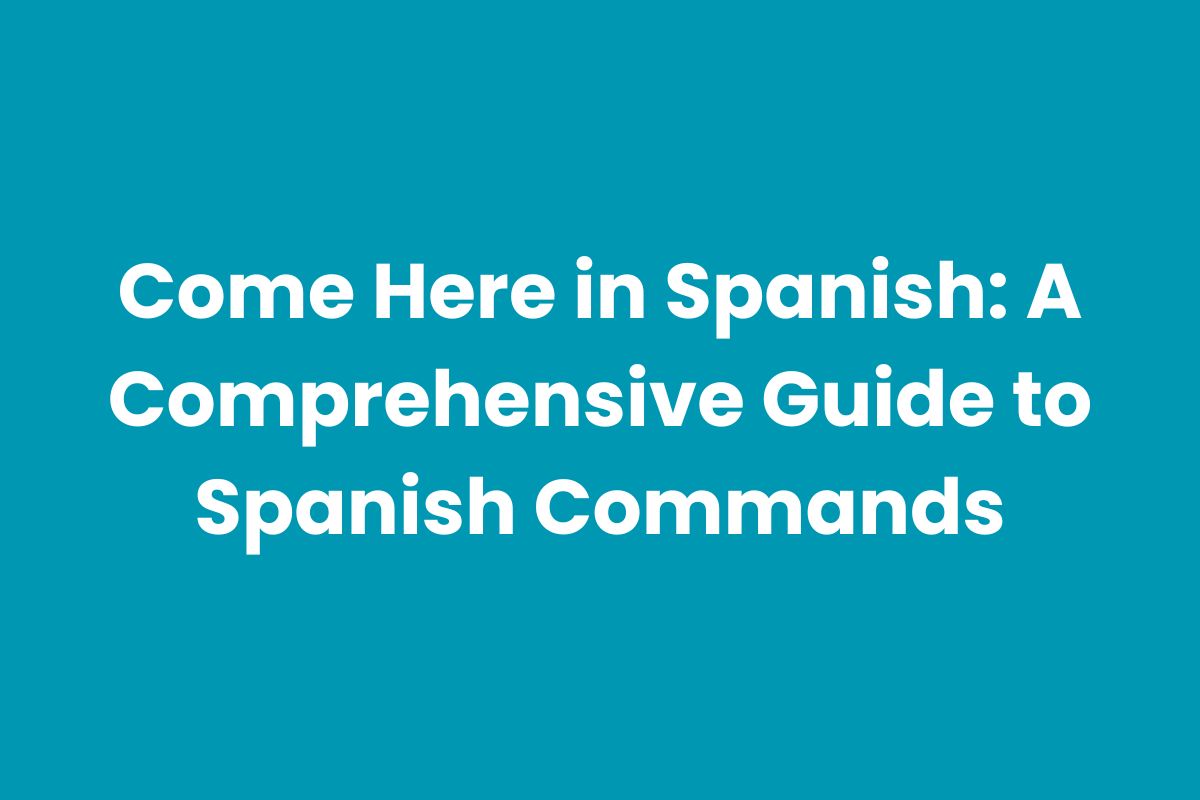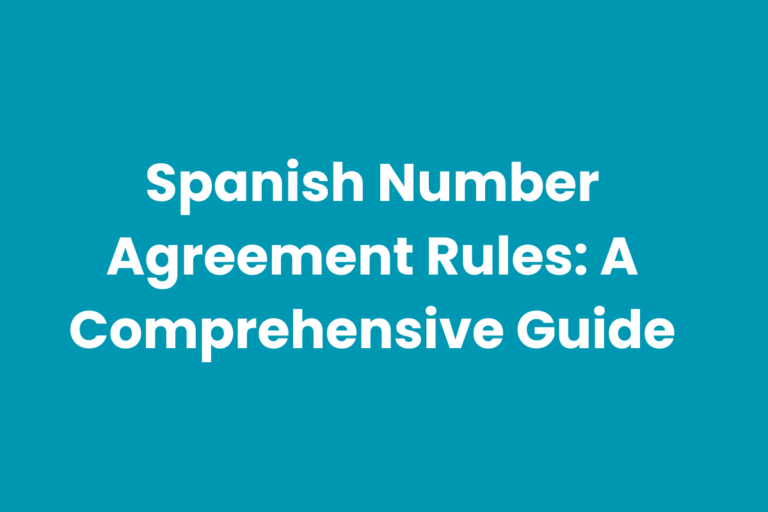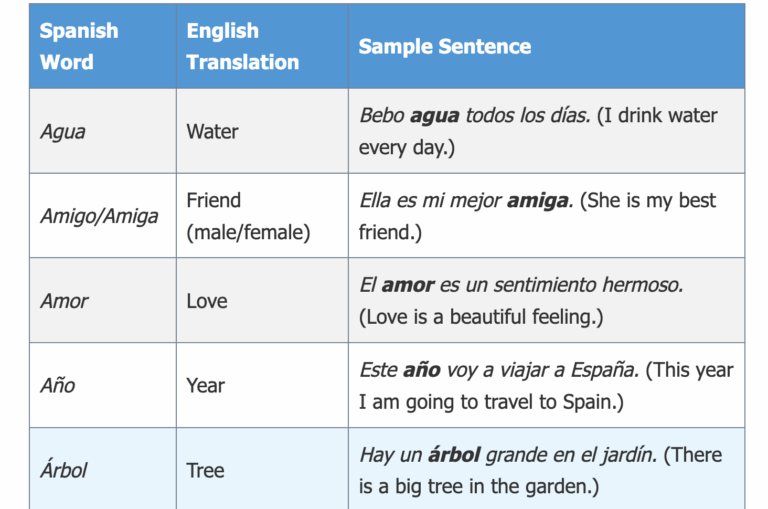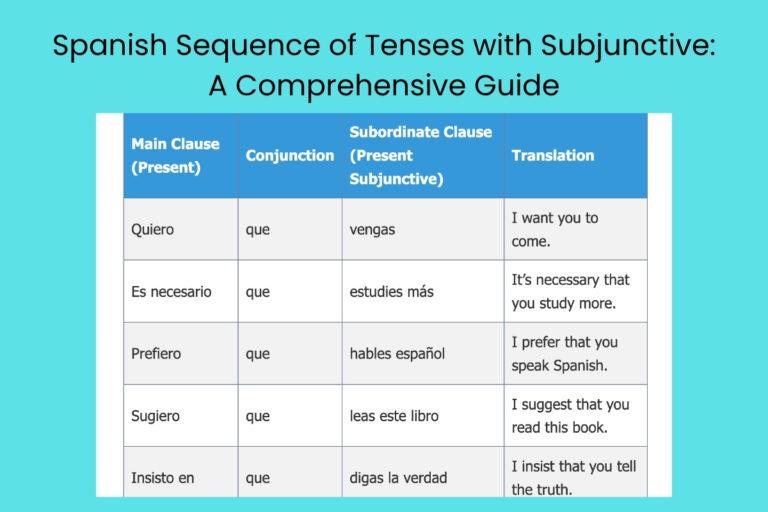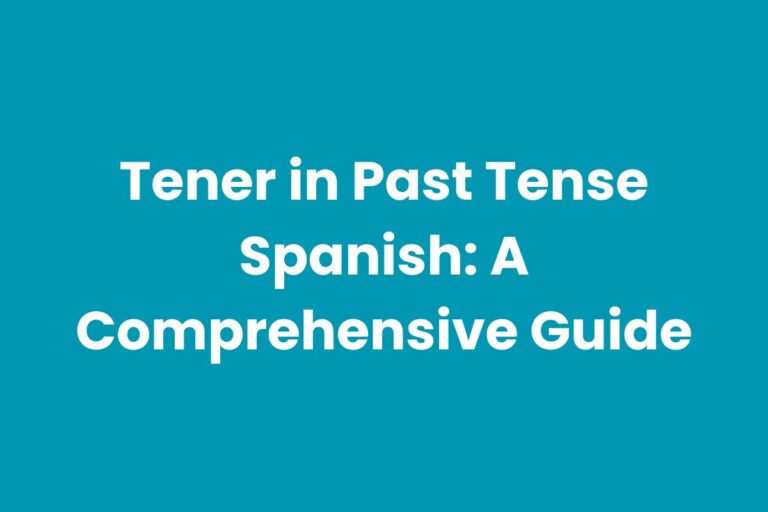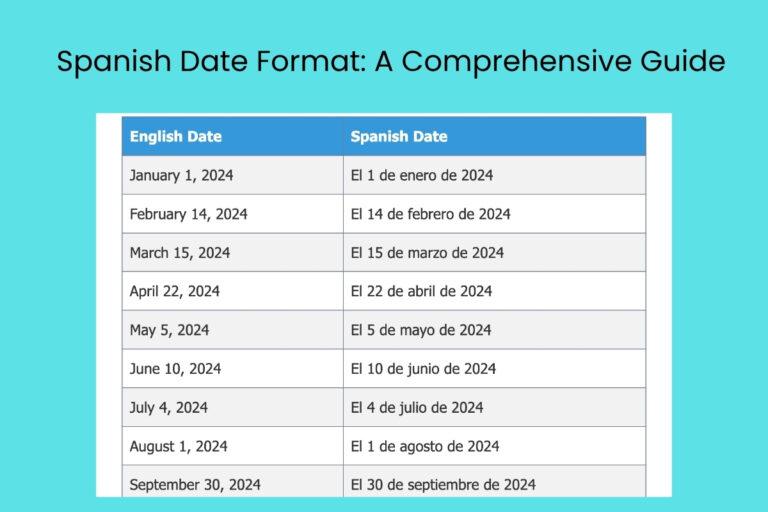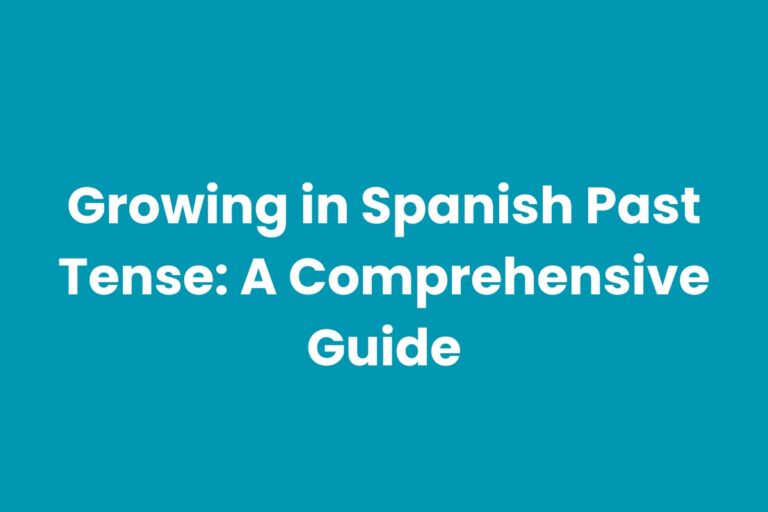Come Here in Spanish: A Comprehensive Guide to Spanish Commands
Understanding how to say “come here” in Spanish is crucial for effective communication, whether you’re giving directions, inviting someone closer, or simply interacting in a casual setting. This seemingly simple phrase has nuances and variations depending on the context, formality, and the relationship between the speakers.
Mastering these expressions will significantly enhance your fluency and cultural understanding of the Spanish language. This guide is designed for learners of all levels, from beginners taking their first steps to advanced students seeking to refine their command of Spanish.
This article will explore the various ways to say “come here” in Spanish, delving into the grammar, usage, and cultural considerations behind each phrase. By understanding these nuances, you’ll be able to communicate more effectively and confidently in Spanish-speaking environments, avoiding potential misunderstandings and building stronger connections with native speakers.
Table of Contents
- Introduction
- Definition: Understanding “Come Here” in Spanish
- Structural Breakdown of Spanish Commands
- Types and Variations of “Come Here” in Spanish
- Examples of “Come Here” in Spanish
- Usage Rules for Spanish Commands
- Common Mistakes When Saying “Come Here” in Spanish
- Practice Exercises
- Advanced Topics: Nuances and Regional Variations
- Frequently Asked Questions
- Conclusion
Definition: Understanding “Come Here” in Spanish
The phrase “come here” in Spanish translates to various expressions, primarily based on the level of formality and the number of people being addressed. The most common translations involve the verb venir (to come) conjugated in the imperative mood (command form). The imperative mood is used to give direct orders or instructions. The choice of pronoun (tú, usted, vosotros, ustedes) dictates the specific conjugation and the level of formality conveyed.
In Spanish grammar, commands are formed differently depending on whether they are affirmative (positive) or negative. Affirmative commands often use a specific conjugation of the verb that differs from the present tense.
Negative commands, on the other hand, typically involve the subjunctive mood. Understanding these distinctions is essential for accurate and effective communication.
The function of “come here” is to direct someone to move towards the speaker. The context in which it’s used can range from a casual request to a more urgent directive.
The appropriate choice of words reflects the relationship between the speaker and the listener, as well as the specific situation. Using the wrong form can be perceived as rude or disrespectful, highlighting the importance of mastering these nuances.
Structural Breakdown of Spanish Commands
The structure of commands in Spanish hinges on the verb venir and the corresponding pronoun. Let’s break down the structural elements for each form:
- Formal (Usted): The structure is typically venga (the formal imperative form of venir) + optional pronoun (usted). For example, Venga, señor (Come here, sir).
- Informal (Tú): The structure is ven (the informal imperative form of venir). For example, Ven, Juan (Come here, Juan).
- Informal Plural (Vosotros): Used in Spain, the structure is venid (the informal plural imperative form of venir). For example, Venid, chicos (Come here, guys).
- Formal/Informal Plural (Ustedes): Used in Latin America and also in Spain for formal plural, the structure is vengan (the formal plural imperative form of venir). For example, Vengan, señores (Come here, gentlemen).
The imperative mood in Spanish often involves changes to the verb stem, especially for irregular verbs. Mastering these irregular forms is crucial for forming grammatically correct commands.
Furthermore, the placement of pronouns (reflexive, direct, or indirect) can affect the structure of the command, particularly in affirmative commands where pronouns are attached to the end of the verb.
Types and Variations of “Come Here” in Spanish
The Spanish language offers various ways to say “come here,” each tailored to specific social contexts and levels of formality. Understanding these variations is key to effective and respectful communication.
Formal “Come Here” (Usted)
The formal usted form is used when addressing someone you don’t know well, someone older than you, or someone in a position of authority. It conveys respect and politeness. The imperative form of venir used with usted is venga.
Informal “Come Here” (Tú)
The informal tú form is used when addressing friends, family members, peers, or anyone with whom you have a close relationship. It is more casual and intimate. The imperative form of venir used with tú is ven.
Informal Plural “Come Here” (Vosotros) – Spain
The vosotros form is used in Spain to address a group of people informally. It is equivalent to the English “you all” or “you guys” in an informal context. The imperative form of venir used with vosotros is venid.
Formal/Informal Plural “Come Here” (Ustedes) – Latin America & Spain
The ustedes form is used in Latin America for both formal and informal plural situations. In Spain, it is used only for formal plural situations. The imperative form of venir used with ustedes is vengan.
Examples of “Come Here” in Spanish
Here are several examples illustrating the different ways to say “come here” in Spanish, categorized by formality and pronoun usage. These examples will help you understand the context in which each phrase is appropriate.
Formal “Come Here” (Usted) Examples
These examples demonstrate the usage of venga in formal settings. Note the respectful tone conveyed in each sentence.
The following table provides 30 examples of formal “come here” in Spanish, using “usted”.
| Spanish | English |
|---|---|
| Venga, señor. | Come here, sir. |
| Venga, señora. | Come here, madam. |
| Venga usted, por favor. | Come here, please. |
| Venga a mi oficina, doctor. | Come to my office, doctor. |
| Venga un momento, profesor. | Come here for a moment, professor. |
| Venga, tome asiento. | Come, take a seat. |
| Venga y explíqueme. | Come and explain to me. |
| Venga a revisar esto. | Come and check this. |
| Venga a probar esta comida. | Come and taste this food. |
| Venga a ver este espectáculo. | Come and see this show. |
| Venga a celebrar con nosotros. | Come and celebrate with us. |
| Venga a la fiesta esta noche. | Come to the party tonight. |
| Venga, no tenga miedo. | Come, don’t be afraid. |
| Venga, todo estará bien. | Come, everything will be alright. |
| Venga, le necesito aquí. | Come, I need you here. |
| Venga, tengo algo para usted. | Come, I have something for you. |
| Venga, necesito hablar con usted. | Come, I need to speak with you. |
| Venga, es importante. | Come, it’s important. |
| Venga, le estoy esperando. | Come, I’m waiting for you. |
| Venga, por aquí, por favor. | Come this way, please. |
| Venga a ver la puesta de sol. | Come and see the sunset. |
| Venga a escuchar esta música. | Come and listen to this music. |
| Venga a bailar con nosotros. | Come and dance with us. |
| Venga a disfrutar del paisaje. | Come and enjoy the scenery. |
| Venga a conocer a mi familia. | Come and meet my family. |
| Venga a tomar un café. | Come and have a coffee. |
| Venga a almorzar conmigo. | Come and have lunch with me. |
| Venga a cenar a mi casa. | Come and have dinner at my house. |
| Venga a pasar el fin de semana. | Come and spend the weekend. |
| Venga a visitarnos pronto. | Come and visit us soon. |
Informal “Come Here” (Tú) Examples
These examples demonstrate the usage of ven in informal settings. Note the casual and friendly tone conveyed in each sentence.
The following table provides 30 examples of informal “come here” in Spanish, using “tú”.
| Spanish | English |
|---|---|
| Ven, amigo. | Come here, friend. |
| Ven, cariño. | Come here, darling. |
| Ven, por favor. | Come here, please. |
| Ven aquí, rápido. | Come here, quickly. |
| Ven un momento. | Come here for a moment. |
| Ven, siéntate. | Come, sit down. |
| Ven y cuéntame. | Come and tell me. |
| Ven a ver esto. | Come and see this. |
| Ven a probar esto. | Come and taste this. |
| Ven a jugar. | Come and play. |
| Ven a ayudarme. | Come and help me. |
| Ven a la fiesta. | Come to the party. |
| Ven, no tengas miedo. | Come, don’t be afraid. |
| Ven, todo estará bien. | Come, everything will be alright. |
| Ven, te necesito. | Come, I need you. |
| Ven, tengo algo para ti. | Come, I have something for you. |
| Ven, necesito hablar contigo. | Come, I need to speak with you. |
| Ven, es urgente. | Come, it’s urgent. |
| Ven, te estoy esperando. | Come, I’m waiting for you. |
| Ven, por aquí. | Come this way. |
| Ven a ver la luna. | Come and see the moon. |
| Ven a escuchar esta canción. | Come and listen to this song. |
| Ven a bailar conmigo. | Come and dance with me. |
| Ven a disfrutar del sol. | Come and enjoy the sun. |
| Ven a conocer a mis amigos. | Come and meet my friends. |
| Ven a tomar una cerveza. | Come and have a beer. |
| Ven a almorzar conmigo mañana. | Come and have lunch with me tomorrow. |
| Ven a cenar a mi casa el sábado. | Come and have dinner at my house on Saturday. |
| Ven a pasar el rato. | Come and hang out. |
| Ven a visitarme pronto. | Come and visit me soon. |
Informal Plural “Come Here” (Vosotros) Examples
These examples demonstrate the usage of venid in informal plural settings, specific to Spain. Note the informal address to a group of people.
The following table provides 25 examples of informal plural “come here” in Spanish, using “vosotros”.
| Spanish | English |
|---|---|
| Venid, chicos. | Come here, guys. |
| Venid, chicas. | Come here, girls. |
| Venid aquí, todos. | Come here, everyone. |
| Venid a ayudarme, por favor. | Come and help me, please. |
| Venid a ver esto, niños. | Come and see this, kids. |
| Venid a jugar con nosotros. | Come and play with us. |
| Venid, no tengáis miedo. | Come, don’t be afraid. |
| Venid, rápido. | Come, quickly. |
| Venid, necesito vuestra ayuda. | Come, I need your help. |
| Venid, tengo algo para vosotros. | Come, I have something for you all. |
| Venid a la fiesta, amigos. | Come to the party, friends. |
| Venid a comer. | Come and eat. |
| Venid a cenar con nosotros. | Come and have dinner with us. |
| Venid a bailar. | Come and dance. |
| Venid a cantar. | Come and sing. |
| Venid a mi casa. | Come to my house. |
| Venid a ver la tele. | Come and watch TV. |
| Venid a estudiar. | Come and study. |
| Venid a aprender español. | Come and learn Spanish. |
| Venid, tengo un secreto. | Come, I have a secret. |
| Venid, os necesito. | Come, I need you all. |
| Venid, es importante. | Come, it’s important. |
| Venid, os echo de menos. | Come, I miss you all. |
| Venid a visitarnos. | Come and visit us. |
| Venid, vamos a divertirnos. | Come, let’s have fun. |
Formal/Informal Plural “Come Here” (Ustedes) Examples
These examples demonstrate the usage of vengan in plural settings, applicable both formally and informally in Latin America, and formally in Spain. Note the address to a group of people.
The following table provides 25 examples of plural “come here” in Spanish, using “ustedes”.
| Spanish | English |
|---|---|
| Vengan, señores. | Come here, gentlemen. |
| Vengan, señoras. | Come here, ladies. |
| Vengan ustedes, por favor. | Come here, please (you all). |
| Vengan aquí, todos. | Come here, everyone. |
| Vengan a ayudarme, por favor. | Come and help me, please. |
| Vengan a ver esto, chicos. | Come and see this, guys. |
| Vengan a jugar con nosotros. | Come and play with us. |
| Vengan, no tengan miedo. | Come, don’t be afraid. |
| Vengan, rápido. | Come, quickly. |
| Vengan, necesito su ayuda. | Come, I need your help. |
| Vengan, tengo algo para ustedes. | Come, I have something for you all. |
| Vengan a la fiesta, amigos. | Come to the party, friends. |
| Vengan a comer. | Come and eat. |
| Vengan a cenar con nosotros. | Come and have dinner with us. |
| Vengan a bailar. | Come and dance. |
| Vengan a cantar. | Come and sing. |
| Vengan a mi casa. | Come to my house. |
| Vengan a ver la tele. | Come and watch TV. |
| Vengan a estudiar. | Come and study. |
| Vengan a aprender español. | Come and learn Spanish. |
| Vengan, tengo un secreto. | Come, I have a secret. |
| Vengan, los necesito. | Come, I need you all. |
| Vengan, es importante. | Come, it’s important. |
| Vengan, los extraño. | Come, I miss you all. |
| Vengan, vamos a divertirnos. | Come, let’s have fun. |
“Come Here” with Names
Adding a name to the command can make it more personal and direct. The name usually follows the command form of the verb.
Here are some examples of how to use “come here” with names in Spanish, considering different levels of formality.
| Spanish | English |
|---|---|
| Ven, María. | Come here, Maria. |
| Venga, Señor Pérez. | Come here, Mr. Perez. |
| Venid, Juan y Ana. | Come here, Juan and Ana. |
| Vengan, Señores Rodríguez. | Come here, Mr. and Mrs. Rodriguez. |
| Ven, Carlos, necesito tu ayuda. | Come here, Carlos, I need your help. |
| Venga, Doctora López, tengo una pregunta. | Come here, Doctor Lopez, I have a question. |
| Venid, niños, es hora de comer. | Come here, kids, it’s time to eat. |
| Vengan, estudiantes, la clase va a empezar. | Come here, students, the class is about to start. |
| Ven, Sofía, quiero mostrarte algo. | Come here, Sofia, I want to show you something. |
| Venga, Profesor Gómez, su opinión es importante. | Come here, Professor Gomez, your opinion is important. |
Usage Rules for Spanish Commands
Understanding the usage rules for Spanish commands is essential for accurate and effective communication. These rules govern the formation of affirmative and negative commands, pronoun placement, and the conjugation of irregular verbs.
Affirmative Commands
Affirmative commands tell someone to do something. The verb conjugation depends on the pronoun being used:
- Tú: Use the third-person singular form of the present indicative (e.g., habla, come, vive). However, there are some irregular verbs with specific forms (e.g., ven from venir, di from decir, sal from salir).
- Usted: Use the third-person singular form of the present subjunctive (e.g., hable, coma, viva).
- Vosotros: Drop the -r from the infinitive and add -d (e.g., hablad, comed, vivid).
- Ustedes: Use the third-person plural form of the present subjunctive (e.g., hablen, coman, vivan).
Negative Commands
Negative commands tell someone not to do something. They always use the subjunctive mood:
- Tú: Use the second-person singular form of the present subjunctive (e.g., no hables, no comas, no vivas).
- Usted: Use the third-person singular form of the present subjunctive (e.g., no hable, no coma, no viva).
- Vosotros: Use the second-person plural form of the present subjunctive (e.g., no habléis, no comáis, no viváis).
- Ustedes: Use the third-person plural form of the present subjunctive (e.g., no hablen, no coman, no vivan).
Pronoun Placement with Commands
Pronoun placement in commands differs between affirmative and negative forms:
- Affirmative Commands: Pronouns are attached to the end of the verb (e.g., Dime – Tell me). If multiple pronouns are used, they follow a specific order (indirect object pronoun before direct object pronoun).
- Negative Commands: Pronouns precede the verb (e.g., No me digas – Don’t tell me).
Irregular Verbs in Commands
Some verbs have irregular forms in the imperative mood. These forms must be memorized.
Here are some common irregular verbs:
- Decir (to say): di (tú), diga (usted), decid (vosotros), digan (ustedes)
- Hacer (to do): haz (tú), haga (usted), haced (vosotros), hagan (ustedes)
- Ir (to go): ve (tú), vaya (usted), id (vosotros), vayan (ustedes)
- Poner (to put): pon (tú), ponga (usted), poned (vosotros), pongan (ustedes)
- Salir (to leave): sal (tú), salga (usted), salid (vosotros), salgan (ustedes)
- Tener (to have): ten (tú), tenga (usted), tened (vosotros), tengan (ustedes)
- Venir (to come): ven (tú), venga (usted), venid (vosotros), vengan (ustedes)
- Ser (to be): sé (tú), sea (usted), sed (vosotros), sean (ustedes)
Common Mistakes When Saying “Come Here” in Spanish
Learners often make mistakes when using Spanish commands. Here are some common errors and how to avoid them:
- Using the wrong level of formality:
- Incorrect: Ven, Señor. (using informal ven with a formal title)
- Correct: Venga, Señor. (using formal venga with a formal title)
- Incorrectly conjugating the verb:
- Incorrect: Vienes aquí. (using present tense instead of imperative)
- Correct: Ven aquí. (using the correct imperative form)
- Misplacing pronouns in affirmative commands:
- Incorrect: Me di. (incorrect pronoun placement)
- Correct: Dime. (correct pronoun placement, attached to the verb)
- Forgetting the subjunctive in negative commands:
- Incorrect: No vienes aquí. (using present tense instead of subjunctive)
- Correct: No vengas aquí. (using the correct subjunctive form)
- Using “ir” instead of “venir”:
- Incorrect: Ir aquí. (using the verb “ir” (to go) instead of “venir” (to come))
- Correct: Ven aquí. (using the correct verb)
Practice Exercises
Test your knowledge with these practice exercises. Fill in the blanks with the correct form of “come here” in Spanish.
The following table includes 10 questions to practice the different forms of “come here” in Spanish. The answers are provided below the table.
| Question | Answer |
|---|---|
| 1. ____, Juan, necesito tu ayuda. (tú) | Ven, Juan, necesito tu ayuda. |
| 2. ____, Señora Rodríguez, tome asiento. (usted) | Venga, Señora Rodríguez, tome asiento. |
| 3. ____, chicos, la cena está lista. (vosotros) | Venid, chicos, la cena está lista. |
| 4. ____, estudiantes, presten atención. (ustedes) | Vengan, estudiantes, presten atención. |
| 5. ____, amigo, no tengas miedo. (tú) | Ven, amigo, no tengas miedo. |
| 6. ____, Profesor Gómez, necesito hablar con usted. (usted) | Venga, Profesor Gómez, necesito hablar con usted. |
| 7. ____, niños, es hora de dormir. (vosotros) | Venid, niños, es hora de dormir. |
| 8. ____, señores, la reunión va a comenzar. (ustedes) | Vengan, señores, la reunión va a comenzar. |
| 9. ____, María, quiero mostrarte algo. (tú) | Ven, María, quiero mostrarte algo. |
| 10. ____, Doctora López, su opinión es muy valiosa. (usted) | Venga, Doctora López, su opinión es muy valiosa. |
Multiple Choice Questions:
Choose the correct form of “come here” for each sentence.
The following table includes 10 multiple choice questions to practice the different forms of “come here” in Spanish. The answers are provided below the table.
| Question | Options | Answer |
|---|---|---|
| 1. ____, Carlos, necesito tu opinión. (tú) | a) Venga b) Ven c) Venid d) Vengan | b) Ven |
| 2. ____, Señorita Pérez, por favor, tome asiento. (usted) | a) Ven b) Venga c) Venid d) Vengan | b) Venga |
| 3. ____, niños, vamos a jugar al parque. (vosotros) | a) Ven b) Venga c) Venid d) Vengan | c) Venid |
| 4. ____, estudiantes, la clase está por comenzar. (ustedes) | a) Ven b) Venga c) Venid d) Vengan | d) Vengan |
| 5. ____, Ana, tengo un regalo para ti. (tú) | a) Venga b) Ven c) Venid d) Vengan | b) Ven |
| 6. ____, Don José, su experiencia es valiosa. (usted | a) Ven b) Venga c) Venid d) Vengan | b) Venga |
| 7. ____, amigos, la fiesta está por empezar. (vosotros) | a) Ven b) Venga c) Venid d) Vengan | c) Venid |
| 8. ____, señoras y señores, el espectáculo va a comenzar. (ustedes) | a) Ven b) Venga c) Venid d) Vengan | d) Vengan |
| 9. ____, Luis, necesito tu ayuda con esto. (tú) | a) Venga b) Ven c) Venid d) Vengan | b) Ven |
| 10. ____, Doña Elena, su consejo es muy importante. (usted) | a) Ven b) Venga c) Venid d) Vengan | b) Venga |
Advanced Topics: Nuances and Regional Variations
Spanish, being a widely spoken language, has regional variations that affect the usage of “come here.” Nuances in tone and expression can also impact how the command is perceived.
- Regional Variations:
- Latin America vs. Spain: As mentioned earlier, ustedes is used in Latin America for both formal and informal plural situations, while in Spain, vosotros is used informally and ustedes formally.
- Specific Countries: Some countries may have colloquial expressions or slang terms that are used informally. These are often context-dependent and require a deeper understanding of local culture.
- Nuances and Tone:
- Adding “por favor”: Using “por favor” (please) can soften the command and make it more polite, regardless of the level of formality.
- Adding “un momento”: Using “un momento” (one moment) can soften the command and make it more polite, regardless of the level of formality.
- Tone of Voice: The tone of voice can significantly alter the perception of the command. A soft, friendly tone can make even a direct command sound inviting, while a harsh tone can make it seem demanding or rude.
- Other Expressions:
- Acércate: (Approach) – A reflexive verb that means “come closer.” This is a less direct way of saying “come here.”
- Pasa por aquí: (Come this way) – A polite way to invite someone to come in a specific direction.
Frequently Asked Questions
Conclusion
Mastering the art of saying “come here” in Spanish involves understanding the nuances of formality, regional variations, and the proper usage of commands. By practicing the different forms and paying attention to context, you can communicate effectively and respectfully in various Spanish-speaking environments.
Remember to consider your relationship with the person you are addressing and the specific situation to choose the most appropriate phrase. With practice and attention to detail, you’ll be able to confidently and accurately use these expressions in your Spanish conversations.

